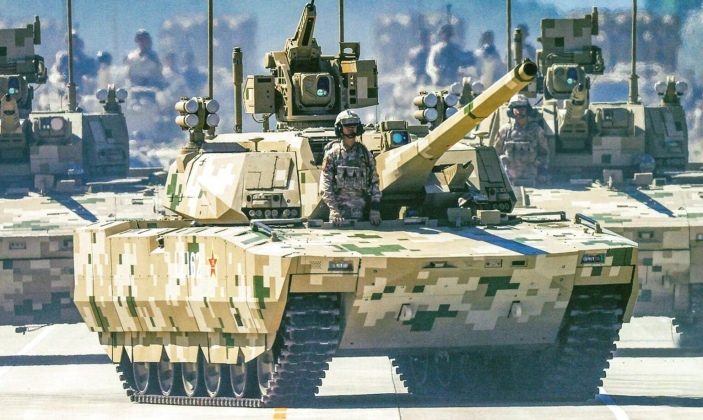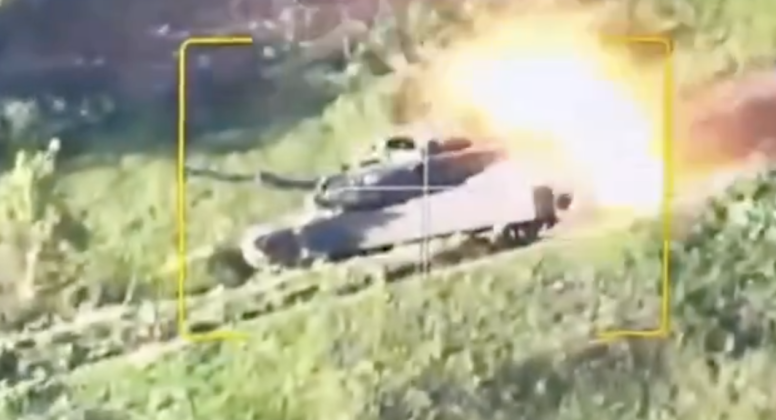News
China Reveals New Type 100 Tank’s Key Features: Optimised For Long Range Combat in a Drone Warfare Era
Following the unveiling of a new class of Chinese main battle tank, the Type 100, on September 3, state media outlets have provided new details on its capabilities and the way its design incorporates lessons from the Ukrainian theatre to prepare for an entirely new era of armoured warfare. This follows growing questions being raised among Western analysts regarding whether ongoing tank programs such as the Challenger 3 and AbramsX will be obsolete before they even enter service, with future designs seen abroad widely expected to follow the example set by the Type 100. The new Chinese tank was revealed to integrate optical, infrared, and radar sensors with networked communications, which connect it to aviation, artillery, and electronic warfare assets. These network-centric warfare capabilities were tested in recent combined-arms exercises, during which crews used augmented reality interfaces to engage targets at beyond visual ranges.

The Type 100 places a particularly high emphasis on data connectivity, active protection, and multi-domain coordination, with Chinese military commentators having described this as part of a broader trend towards networked joint operations, in which tanks serve as nodes within an integrated combat structure rather than acting as isolated platforms. During recent combined-arms battalion exercises one tank commander, Sun Yongming, particularly stressed the advantages provided by tank crews’ ability perceive and engage the battlefield from all directions and over much longer distances. This has transformed armoured warfare from close-proximity combat to engagements over greater distances, he observed. Another commander, identified only by his surname Yuan, said the new tank’s capabilities allowed him to coordinate with both his battalion and with supporting units from other branches.

New combined arms exercises involving the Type 100 have seen the tanks operate closely alongside new rocket artillery systems, electronic warfare teams, and reconnaissance drones. The tank has maintained a relatively light and highly mobile design, albeit at expense of armour mass and gun size. The demonstration in the Ukrainian theatre that modern warfare will rarely see tanks engage one another with their main guns has strengthened arguments in favour of a shift from 125mm to less powerful 105mm guns, which not only makes the vehicles much lighter, but also allows them to carry significantly more ammunition. Advances in the capabilities of anti-tank missile and APFSDS rounds may allow the Type 100 to still frontally penetrate heavily armoured enemy tanks despite using a smaller gun, although its network centric warfare capabilities mean it may instead use its sensors and data links to call in strikes by precision guided artillery or loitering munitions if facing advanced enemy vehicles.
The Type 100 uses both active and multi-spectral defence systems, with Two GL-6 active protection systems managed by four phased-array radar panels providing 360-degree threat detection against anti-tank missiles, rockets, and top-attack munitions. The tank’s laser warning receivers, ultraviolet sensors, and multi-band optical detection arrays provide further protection against guided weapons. The use of irregular polygonal shapes on the hull and turret also reduce hit probability. Unlike Western, Russian and Korean tanks, the crew of the Type 100 is enclosed in armoured capsules within the hull, capitalising on advances in autoloader and remote turret technologies to achieve a much greater degree of protection. The unmanned turret configuration also allows for additional ammunition storage while making the vehicle considerably lighter, much as was previously done on the unrealised Russian T-14 tank design. The Type 100’s development follows a broader trend towards China’s defence sector achieving increasingly distinct global leadership in a growing number of fields, with no other country being close to operationalising a similarly advanced tank design or likely to do so before the next decade.












